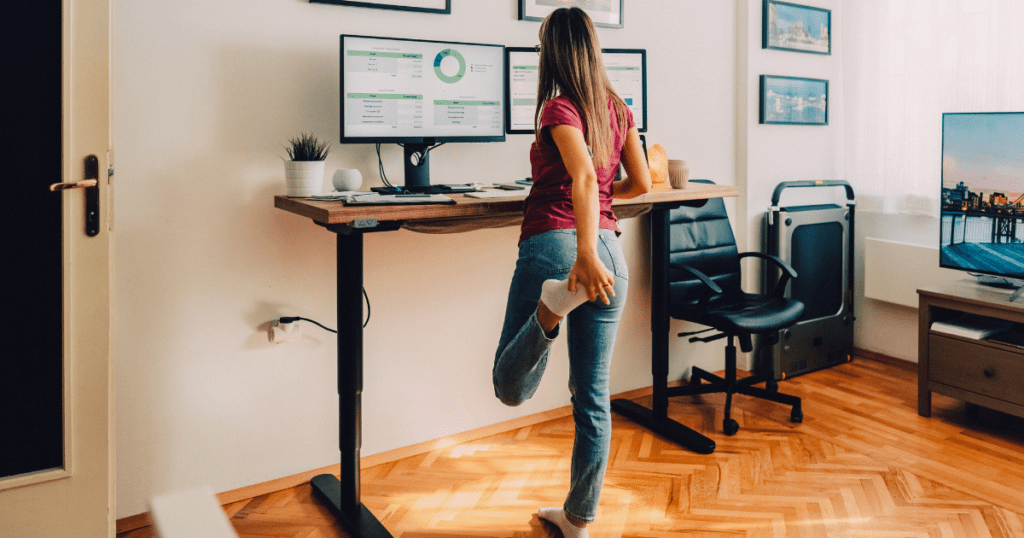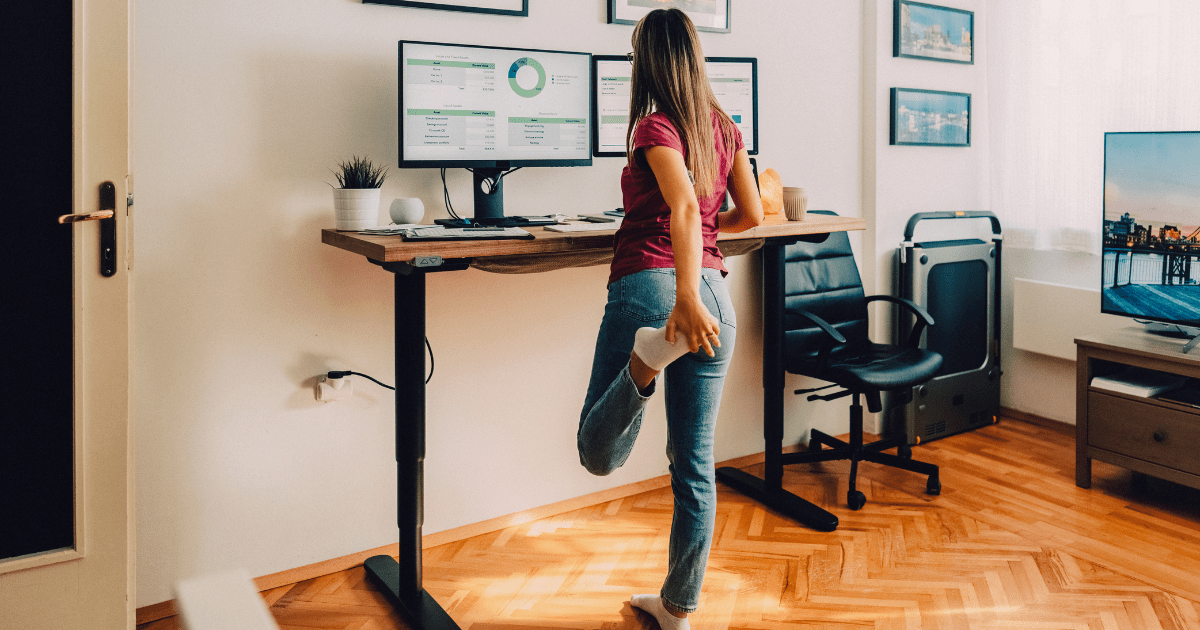Standing Desks: A Step Towards Healthier Work Habit
Standing Desks: A Holistic Approach to Healthier Work Routines – Exploring Benefits, Productivity, and Balancing Sedentary Lifestyles in Modern Workspaces
In today’s world, where desk jobs and sedentary lifestyles are the norm, finding ways to combat the potential health risks associated with prolonged sitting is increasingly important. As the name implies, standing desks are workstations designed to allow you to work while standing up. However, are they truly beneficial for your health and productivity? Let’s delve into this question and explore the science behind standing desks.

The Rise of Standing Desks
Recently, the trend of using standing desks has significantly increased in popularity. They come in various designs, some with fixed heights and others with adjustable heights, allowing users to alternate between sitting and standing. Some standing desks even incorporate treadmill-like features, enabling users to walk while they work. Their prices range from less than $100 for a basic fixed-height desk to over $1000 for an advanced electric or treadmill desk.
Potential Health Benefits of Standing Desks
The main reason for utilizing standing desks is to decrease the time one remains seated throughout the workday. Extended periods of being seated have been linked to multiple health concerns, such as weight gain, cardiovascular conditions, diabetes, and specific cancer varieties. But can standing desks truly help mitigate these risks? Let’s examine the potential health benefits of standing desks.
Calorie Burning
It’s often assumed that standing burns more calories than sitting. Indeed, research has found that standing burns slightly more calories per hour than sitting. However, the difference is relatively small. For instance, a study published in the Journal of Physical Activity and Health found that while sitting burns around 80 calories per hour, standing burns approximately 88 calories per hour. Walking, on the other hand, burns a substantial 210 calories per hour.
Blood Sugar Levels
Studies suggest standing after a meal can help lower blood sugar levels faster than sitting. This could be particularly beneficial for individuals with diabetes or pre-diabetes.
Musculoskeletal Benefits
Some advocates of standing desks argue that standing can help reduce the risk of shoulder and back pain. However, more rigorous studies are needed to confirm these potential benefits.
Standing Desks and Work Productivity
In addition to potential health benefits, standing desks may also enhance work productivity. A study of call center employees found that those with standing desks were 45% more productive daily than their seated counterparts. However, it’s worth noting that standing desks may not be suitable for tasks requiring fine motor skills, which are often performed more accurately while seated.
Balancing Standing and Sitting
Experts generally recommend a balance between standing and sitting throughout the workday. Starting with standing for 30 minutes at a time, a few times a day, and gradually increasing the duration as you feel comfortable is a good approach.
Positioning Your Standing Desk
When using a standing desk, it’s important to ensure your body is properly aligned. When you stand, make sure your head, neck, and spine are aligned in a vertical line, and when you’re seated at a desk, ensure that your elbows are bent at a right angle while your wrists rest flat on the surface. Your computer monitor should be at eye level.
Footwear and Support
Comfortable shoes with no or low heels are recommended when using a standing desk. Also, standing on a cushioned mat can provide additional support and reduce discomfort.
Breaks and Physical Activity
Even when using a standing desk, it’s important to take breaks and move around every 30 minutes or so. This can help alleviate fatigue and provide a change of posture. And, of course, regular moderate-intensity exercise remains crucial for overall health.
The Verdict on Standing Desks
Given the current evidence, standing desks provide some health and productivity benefits, although more research is needed. Remember, standing desks are not a panacea for the potential health risks associated with a sedentary lifestyle. They should be used as part of a comprehensive approach to promote movement and reduce prolonged sitting during the workday.
Conclusion
Standing desks are an innovative solution to the problems posed by prolonged sitting. They encourage movement, help burn a few extra calories, and potentially improve productivity. However, they are not a substitute for regular physical activity and a healthy lifestyle. If you’re considering a standing desk, it’s important to start gradually, ensure proper alignment and support, and balance standing with sitting and regular breaks.
Ultimately, the key is to keep moving, whether you sit or stand. After all, as the saying goes, “the best position is the next position.” So, why not give standing desks a shot and see if they work for you? As we continue to adapt to evolving work environments, standing desks may be the next step in promoting healthier work habits.
References:
Orthopedic Hospital of Wisconsin. (2021). Standing Desk Ergonomics: 7 Benefits of Standing at Work. (https://www.ohow.com/2021/02/08/standing-desk-ergonomics-7-benefits-of-standing-at-work/). Accessed December 20, 2023
Harvard Health Publishing. (2023). The truth behind standing desks. (https://www.health.harvard.edu/blog/the-truth-behind-standing-desks-2016092310264). Accessed December 21, 2023
Watson, S. (2023). Standing Desks: How They Help You Beat Inactivity. (https://www.webmd.com/fitness-exercise/standing-desks-help-beat-inactivity). Accessed December 20, 2023.
Category
- Health Issues (69)
- Healthy Diet (46)
- Herbs for Health (11)
- Mental Health (32)
- Skin Care (20)

